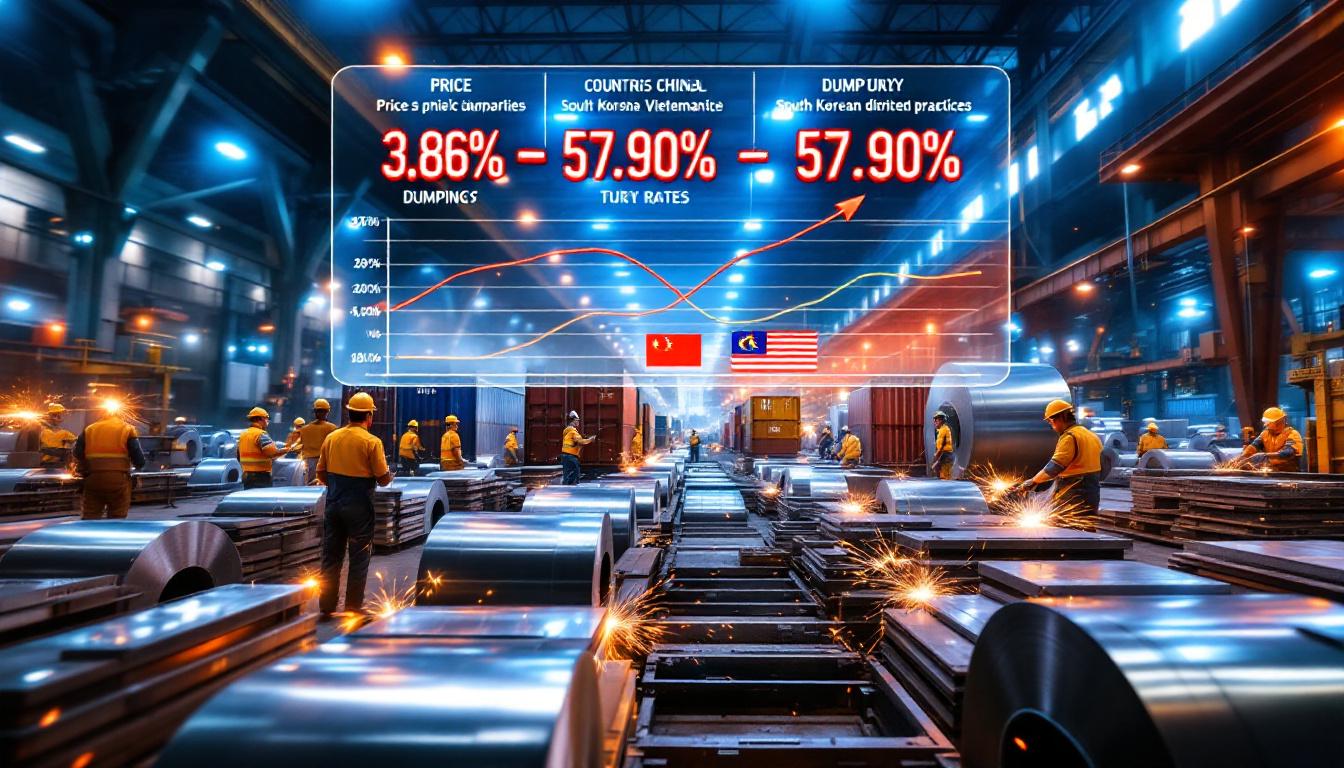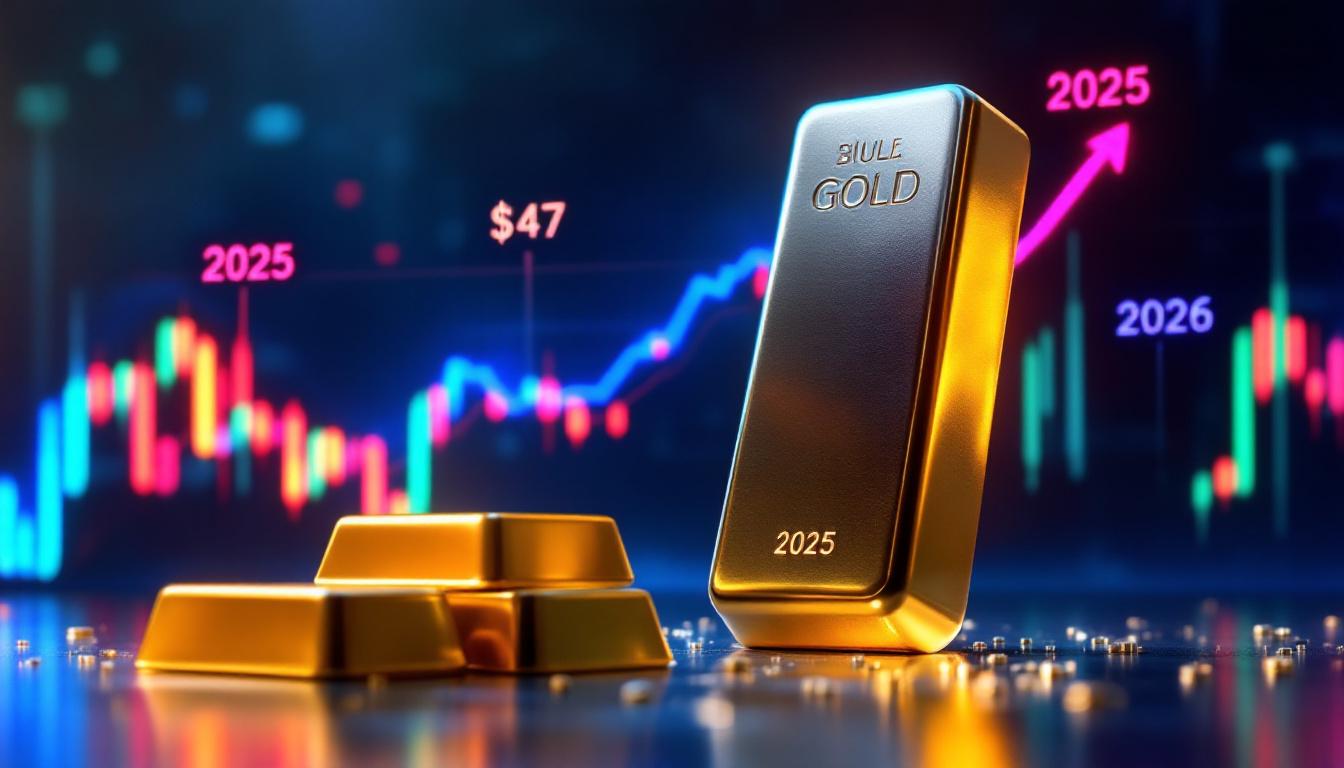How Are Commodity Prices Responding to Market Turmoil?
Recent market volatility has sent shockwaves through the commodity sector, with dramatic price movements occurring across multiple resources. Copper, often considered the bellwether of industrial economic health, has experienced a particularly brutal decline, with futures plummeting from over $5/lb to just over $4/lb in a single week. Even more concerning for producers, spot prices have now fallen below the $4/lb threshold.
Iron ore has demonstrated surprising resilience amidst the turmoil, holding steady at approximately $102/ton for the 62% benchmark. This stability comes despite major mining stocks experiencing significant declines, creating a notable disconnection between commodity and equity performance.
In the energy sector, Newcastle coal prices remain flat at historically subdued levels, while metallurgical coal has shown unexpected strength with a bounce in the HCC premium low-vol index. This divergence highlights the complex and often unpredictable nature of commodity markets during periods of heightened uncertainty.
Precious metals have not been immune to the volatility. Gold experienced a sharp 3% single-day decline but continues to maintain strength above AU$5,000/oz in Australian dollar terms and above $3,000/oz in US dollar terms. Silver, traditionally more volatile than gold, suffered a dramatic 7% single-day plunge, underscoring its reputation as "gold on steroids" during market extremes.
A critical factor providing some cushioning for Australian mining companies is the Australian dollar's descent to a 5-year low against the USD. This currency movement creates a natural hedge for domestic producers, effectively increasing their revenue in local currency terms even as commodity prices in USD terms decline.
The Role of Tariffs and Trade Tensions
The implementation of 25% US tariffs has significantly disrupted copper and other metals pricing. These tariffs have created an artificial price differential between US markets and the rest of the world, leading to distorted trading patterns and supply chain disruptions.
China's strategic response has been particularly noteworthy, with Beijing implementing China's mineral controls. Rather than announcing outright export bans, China has introduced "dual use product control measures" – a bureaucratic mechanism that effectively limits exports while maintaining plausible deniability about trade restrictions.
The specific rare earth elements under China's controls include terbium (TB), dysprosium (DY), samarium (SM), gadolinium (GD), lutetium (LU), scandium (SC), and yttrium (Y). These controls primarily affect heavy rare earths used in high-performance magnets essential for electric vehicles, wind turbines, and military applications.
Interestingly, Japan, not the United States, is the largest importer of these metals, creating a complex geopolitical dynamic where trade tensions between the US and China may inadvertently strain US-Japan relations.
Which Mining Companies Are Most Vulnerable to Market Volatility?
High-Risk Miners with Combined Financial and Operational Leverage
The most vulnerable mining companies in the current environment are those facing the dangerous combination of operational and financial leverage. Operational leverage stems from high fixed costs relative to variable costs, while financial leverage relates to debt burdens.
Aries Metals exemplifies this vulnerability with $40 million in debt against only $26 million in unrestricted cash. Similarly, 29Metals carries US$162 million in drawn debt, partially offset by AU$268 million in cash equivalents.
Mineral Resources (MinRes) faces particular challenges with iron ore prices hovering dangerously close to the $100/ton threshold. The company's bonds trading below par value reflect market concerns about its financial stability in a prolonged commodity downturn.
Liontown Resources' financing strategy creates additional complications through currency exposure. With Ford debt and an LG convertible note denominated in US dollars, the weakening Australian dollar increases the effective debt burden in local currency terms.
Sheffield Resources represents another high-risk case, with higher than expected operational costs and a challenging transition to drill and blast mining techniques. Similarly, Metro Mining carries US$51 million in drawn debt, though it has wisely implemented a currency hedge at AU$0.68 to mitigate some foreign exchange risk.
Burgundy Diamonds demonstrates the perfect storm of operational and financial leverage in a structurally depressed diamond market. Meanwhile, Bowen Coking Coal's complex debt structure – US$34 million to Taurus, AU$45 million to New Hope, plus $40 million in convertible notes – creates multiple financial pressure points.
As a high-cost iron ore producer, Fenix Resources remains vulnerable despite the cushioning effect of the weakened Australian dollar. Mac Copper trades at all-time lows ($12.76) while carrying US$225 million in drawn debt, creating a concerning debt-to-equity ratio.
Syrah Resources operates with only US$30 million in unrestricted cash against a heavily indebted capital structure. Adriatic Metals faces high costs during production ramp-up while owing US$120 million to Orion. Paladin Energy carries US$100 million in drawn debt, a position that appears particularly unfortunate given the missed opportunity for equity financing 18 months ago when market conditions were more favorable.
Companies Showing Resilience
Not all mining companies are equally vulnerable to market turbulence. Lynas Rare Earths has seen its share price defy market gravity, primarily due to the strategic importance of rare earth elements in high-tech manufacturing and defense applications. The market appears to be assigning a geopolitical premium to Lynas as a non-Chinese supplier of these critical materials.
Gold miners generally remain in a favorable position, making sufficient cash flow with gold market trends maintaining strength above AU$5,000/oz. The precious metal's traditional role as a safe haven during market uncertainty continues to support producers even as other commodity prices falter.
What's Happening with Rare Earth Elements in the Trade War?
China's Strategic Leverage
China has implemented "dual use product control measures" on specific rare earth elements rather than announcing explicit export bans. This bureaucratic approach effectively limits exports while avoiding direct accusations of trade restrictions.
These controls specifically target elements with both civilian and military applications, creating leverage in ongoing trade negotiations. The measures affect a narrow group of heavy rare earths including terbium (TB), dysprosium (DY), samarium (SM), gadolinium (GD), lutetium (LU), scandium (SC), and yttrium (Y).
An often overlooked aspect of this situation is that Japan, not the United States, represents the largest importer of these controlled metals. This creates potential rifts in the US-Japan alliance, as Japanese manufacturers face supply constraints for components used in products exported globally, including to the US market.
Strategic Rare Earth Elements
Heavy rare earth elements like terbium (TB) and dysprosium (DY) are particularly critical for high-performance NdFeB (neodymium-iron-boron) magnets. These magnets enable the miniaturization and increased efficiency of electric motors used in electric vehicles, wind turbines, and various military applications.
Notably, light rare earth elements like neodymium (ND) and praseodymium (PR) – which are more abundant globally – are not directly controlled under China's measures. This strategic distinction highlights Beijing's sophisticated understanding of supply chain vulnerabilities.
Companies like Lynas are positioned to potentially separate TB and DY from 2025, creating alternative supply sources outside China. However, developing the specialized processing capabilities for these elements requires significant time and investment, leaving the market vulnerable to supply constraints in the near term.
How Is the Uranium Market Responding to Current Conditions?
Sentiment Shift in Uranium
The uranium market demonstrates the extreme volatility that can occur in relatively small commodity markets. Sentiment has shifted dramatically from extreme exuberance to bearish in less than a year. This dramatic reversal is exemplified by Paladin Energy, which has fallen 75% from its May 2024 high.
Despite this pessimism, sophisticated value investors are beginning to see opportunity. Capernic Global Investors has acquired a 5.2% stake in Paladin, suggesting the company may be undervalued at current levels. This contrarian positioning comes as the uranium spot price has fallen from a high of $108 to below $70.
The uranium market insights highlight the psychological factors that often drive commodity cycles, with periods of irrational exuberance followed by excessive pessimism. These sentiment swings frequently create opportunities for investors willing to take contrarian positions.
Contrasting Offtake Strategies
Uranium producers have adopted markedly different strategies to manage price risk. Lotus Resources has secured fixed-price contracts for 3.8 million pounds through 2029, providing revenue certainty at the expense of potential upside if prices recover.
In contrast, Boss Energy has only contracted 1 million pounds over seven years from an operation expected to produce 2.5 million pounds annually. This approach maintains significant exposure to spot market prices, reflecting confidence in long-term uranium price appreciation.
Paladin has taken a middle path, contracting 50% of life-of-mine production with 88% of these contracts exposed to market-related prices. This hybrid approach provides some downside protection while maintaining significant upside potential.
These contrasting strategies reflect varying confidence levels in uranium price recovery among producers and highlight the difficult risk management decisions facing mining executives in volatile commodity markets.
What Impact Does Currency Have on Australian Mining Companies?
The Australian Dollar as an Automatic Stabilizer
The Australian dollar's descent to a 5-year low against the USD provides a significant cushion for Australian miners against falling commodity prices. This currency movement functions as an automatic stabilizer for the domestic mining industry.
With flat commodity prices in USD terms, revenues for Australian miners increase in AUD terms when converted at the lower exchange rate. Meanwhile, operating costs remain largely stable in AUD, effectively improving margins during what would otherwise be a challenging price environment.
This natural hedge has historically been a key advantage for Australian resource companies during commodity downturns. However, companies with US dollar-denominated debt face additional challenges from the weaker AUD, as their debt servicing costs increase in local currency terms.
Winners and Losers from Currency Movements
Gold producers emerge as particular beneficiaries of the current currency environment, with gold prices exceeding AU$5,000/oz. This price level ensures robust profit margins even for relatively high-cost operations.
Conversely, companies with USD debt face increased servicing costs that may offset the revenue benefits of the weaker currency. High-cost producers receive valuable breathing room from the currency effect, potentially extending the viable operating life of marginally economic mines.
Companies with currency hedges, such as Metro Mining's position at AU$0.68, have some protection against further currency weakening but may miss out on additional benefits if the AUD continues to decline against the USD.
How Are Renewable Energy Solutions Transforming Mining Operations?
Breakthrough in Renewable Baseload Power
A significant development in the mining sector is Kamoa Kakula copper mine's agreement with Cross Boundary Energy for baseload renewable power. This system includes a 22-megawatt peak solar PV system combined with a 526-megawatt hour battery energy storage system.
The integrated plant will provide 30 megawatts of dispatchable renewable baseload energy, effectively replacing fuel generators and reducing carbon emissions by an estimated 79,000 tons annually. The system is expected to produce 300,000 megawatt hours of clean energy per year.
In an innovative financial structure, Cross Boundary Energy will own and operate the plant while Kamoa Copper pays only for consumed energy. This arrangement eliminates the capital expenditure typically associated with power infrastructure, improving the mine's financial flexibility.
Industry Implications
This project demonstrates the increasing efficiency of solar PV technology and the declining costs of battery storage. More importantly, it shows that renewable baseload systems are becoming both technically viable and economically competitive with traditional diesel generators.
The capital-efficient approach to power generation offers a model for other mining operations, particularly those in remote locations with limited grid access. This addresses previous industry concerns about the intermittency of renewable energy sources, proving that integrated battery systems can provide the reliability required for continuous mining operations.
As more mining companies adopt similar solutions, the sector's carbon footprint will decrease significantly, improving environmental performance while potentially reducing operating costs. This transformation represents a win-win scenario for both mining economics and sustainability goals.
FAQs About Market Turmoil and Commodity Prices
How do US tariffs affect global commodity prices?
US tariffs create price differentials between US markets and the rest of the world. For copper specifically, prices in the US fell dramatically as buyers rushed to import before the 25% tariffs took effect, creating temporary oversupply. This distortion affects global trading patterns and can lead to regional price disparities that complicate risk management for producers and consumers alike, according to recent analysis from Reuters.
Why are some mining stocks falling more than the underlying commodity prices?
Mining stocks typically demonstrate greater volatility than the commodities they produce due to operational leverage (fixed costs against variable revenues) and financial leverage (debt). When commodity prices fall, profit margins can shrink dramatically, amplifying the impact on share prices. Additionally, market perception of future price direction often leads investors to price in continued declines, further pressuring equities.
What makes a mining company particularly vulnerable in a market downturn?
The most vulnerable companies combine high operational costs with significant debt levels, especially US dollar-denominated debt when their revenue is in Australian dollars. Companies with near-term debt maturities and limited cash reserves face the greatest challenges. Those operating mines with structural cost issues or in jurisdictions with political instability face compounded risks during market downturns.
How does the Australian dollar affect mining companies during market turmoil?
The Australian dollar typically weakens during commodity price downturns, acting as an automatic stabilizer for Australian miners. This provides a partial hedge, as their USD-denominated revenues convert to more Australian dollars, while many of their costs remain in AUD. This currency effect can temporarily mask underlying profitability challenges and extend the viability of marginally economic operations, as explained by The Guardian's market analysis.
Why are rare earth elements significant in the current trade tensions?
China dominates global production of certain critical rare earth elements, particularly heavy rare earths like terbium and dysprosium. These elements are essential for high-performance magnets used in clean energy and defense applications, giving China strategic leverage in trade negotiations. The specialized processing required for these elements creates significant barriers to entry for potential competitors, reinforcing China's market dominance.
For those looking to navigate these uncertain markets, understanding global commodity insights and our comprehensive mining stocks guide can provide essential context during this period of market turmoil and commodity price volatility.
Ready to Spot the Next Major Mineral Discovery Before the Market?
Discovery Alert's proprietary Discovery IQ model instantly identifies significant ASX mineral discoveries, helping traders and investors capitalise on opportunities before price movements occur. Explore historic returns from major discoveries and learn how you can gain this market-leading advantage by visiting Discovery Alert's discoveries page.




